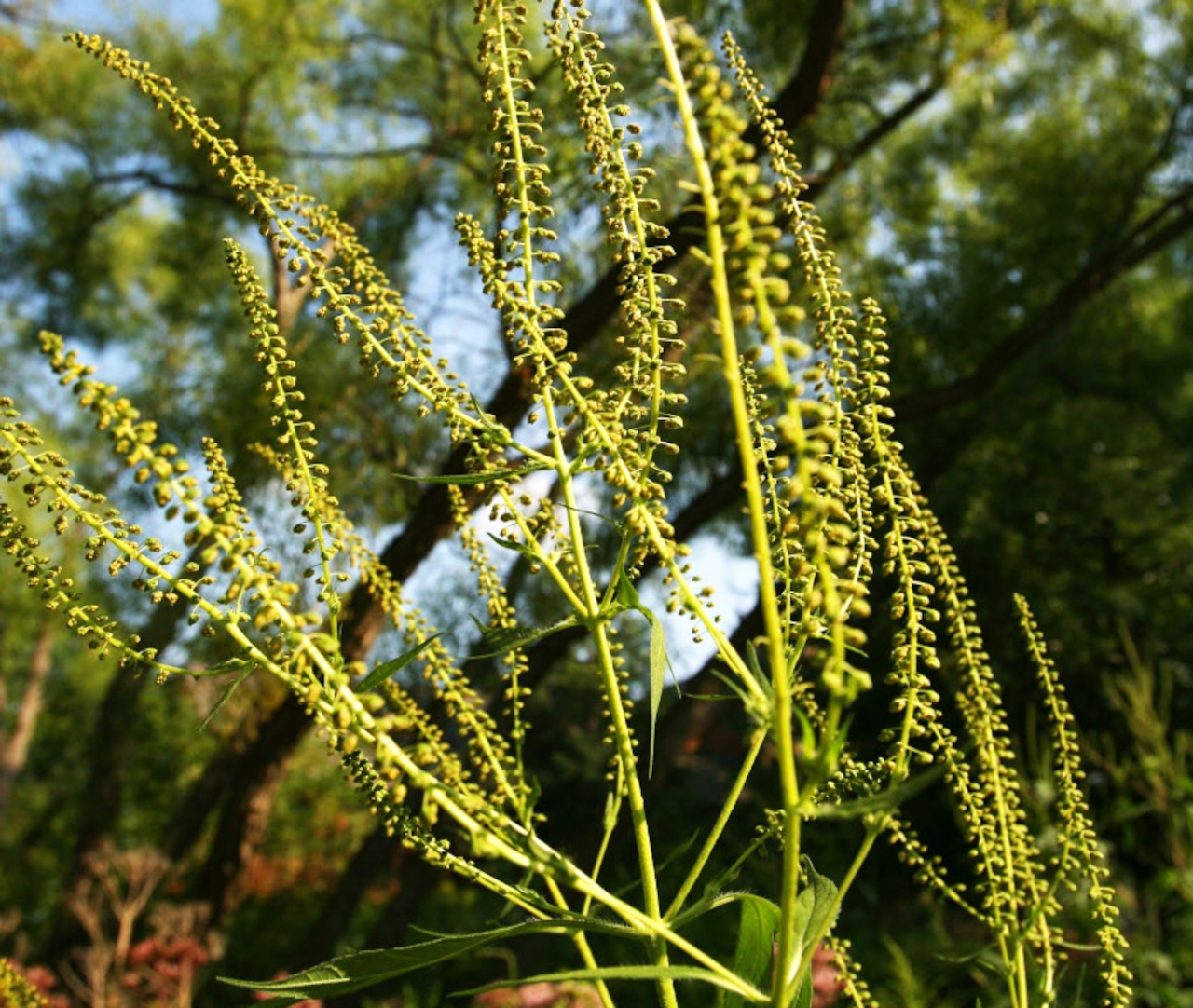I wrote this column on a morning when the heat index was predicated to get to 100. And although it may be psychological, somehow my morning coffee doesn’t taste as good on hot mornings like that.
Hundreds of
monarda
plants are now blooming in the front garden, and ruby-throated hummingbirds are coming in to feed on them. Butterflies also like them, and that morning two monarch butterflies were flying from one monarda to another.
Phlox plants are currently blooming among the monardas, and both butterflies and hummingbirds go to them. Members of the phlox family are primarily native to North America, with the most kinds being found in the western part of the country.
Common milkweed plants are also growing there among the monardas, and most of them are still blooming. Their blooms won’t last long but the plants themselves will and that’s what’s important.
But behind the monardas, giant — or great — ragweed plants are growing, most of which have reached 10 feet tall. Ragweeds are natives. However, even though I’m glad they grow in many of our natural habitats, I don’t really want them in my flower gardens.
Ragweed flowers are on small vertical greenish stalks at the top of the plants, and they’re easily overlooked. But there are hundreds of them on each stalk, and their pollen is blown everywhere by the wind.
It’s
ragweed pollen
, not goldenrod pollen, that’s responsible for most hay fever cases. But people blame their allergies on the goldenrods because their yellow blossoms are easily seen.
There are other plants growing in the front gardens that I don’t want but they’re aliens, not natives. Bindweed is a member of the morning glory family, and its white blossoms look just like morning glories.
But as bindweed grows it twines around all other plants and at times kills them or keeps them from growing. It’s a pest plant whose Latin name actually means “to twine.”
The recent hot, rainy weather has also caused some of the tiger lilies along the kitchen walkway to get really big. David measured them and they’re 6 1/2 feet tall. It won’t happen, but I wouldn’t care if they got to be as big as the ragweeds because their flowers are both pretty and fragrant.
David’s actually more of a gardener than I am because he plants all kinds of vegetables and hundreds of sunflowers. He’s fond of zinnias, some of which are already showing flowerheads, and just recently he planted another batch of them. He didn’t have to wait long to see if they’d germinate, though, because the hot wet weather had them up out of the ground in less than three days.
Some corn fields are already showing tassels and corn cobs on tall, very green stalks. Our son Jim is a full-time farmer and plants many corn fields, and recently I asked David how many individual plants are in one acre of field corn. However, his answer surprised me because he said that Jim plants 30,000 per acre.
As I sat drinking my coffee that miserably hot morning, a yellow warbler was eating insects in the shrubs behind the garden. And at one point it flew towards me and almost hit my head before turning and flying away.
more lehigh valley outdoors news
-
Pa. cities crack down on illegal swimming amid broader safety, quality of life concerns
-
Sunday hunting and more: These Pennsylvania outdoors laws were signed this summer
-
Deer urine OK’d for use by Pennsylvania hunters after testing flap: What the science says
-
Scarlet tanager spotted exhibiting rare ground behavior | Lehigh Valley Nature Watch
-
Pennsylvania kayaker dies on Delaware River, wasn’t wearing life vest
Our journalism needs your support. Please subscribe today to
lehighvalleylive.com
.






